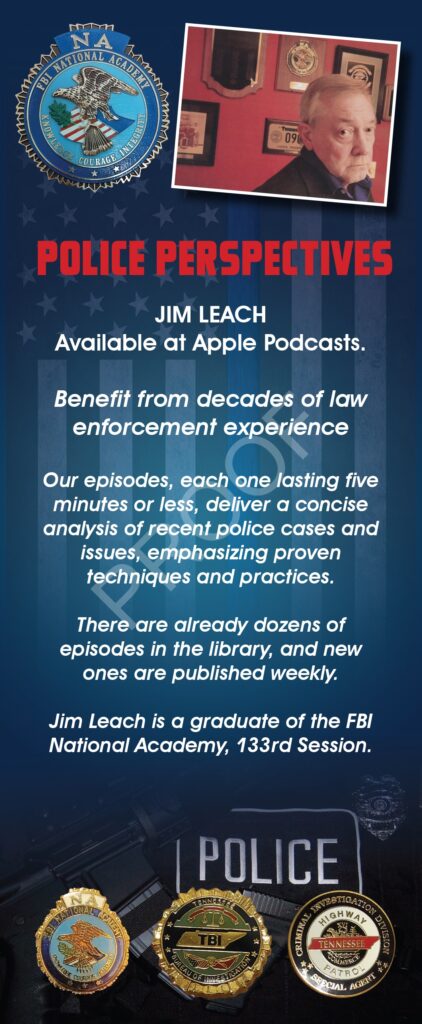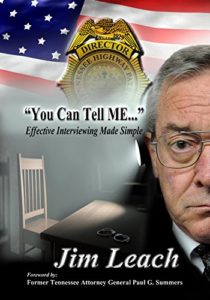It’s Just A Little Cut…
It was an especially violent murder scene. There was blood everywhere.
The evidence indicated there had been a fight in the bedroom and the victim lost. She was found lying on the floor, next to her bed. She had been stabbed multiple times and the autopsy showed stabbing to be the cause of death.
You could track the killer’s path from the bedroom, through the kitchen, and into the bathroom by the trail of blood. There was blood all over the bathroom sink, as well as the floor and the tub. It looked like the murderer had been wounded and tried to stop the bleeding. There was a lot of blood in that bathroom.
Hospitals in a four county area were checked to see if someone had shown up with a knife wound. The results were negative.
We asked for assistance from the Tennessee Bureau of Investigation Crime Lab in Donelson (Nashville) and they immediately sent a team of forensic specialists. These folks were true experts in working a crime scene. They photographed and drew sketches of the scene. Blood samples and trace evidence were collected. DNA was not a part of the game back then, but we could hope for blood type and maybe a sub-type. Fingerprints were developed and “lifted”. After several hours of tedious work the crime scene technicians finished and headed back to the Crime Lab to analyze what they had found. Blood tests confirmed two separate blood types had been recovered from the scene, so our theory the killer had been wounded in the fight appeared to be correct.
Five TBI agents (including myself) were assisting the local police department in the investigation. It was a small department and virtually every officer was working on the case in some fashion. The sheriff’s department helped with interviews and locating witnesses. As is usually the case in a vicious crime like this, everybody pitches in and works together. Many times there are problems between departments for various reasons, but at a time such as this, differences are forgotten for a while.
Our investigation revealed the victim to be a Dilaudid dealer. This was in the mid 1980’s and Dilaudid was probably the most potent drug readily available in our rural area. Dilaudid was highly addictive and it cost $50 a pill on the street. In short, people would kill you over Dilaudid.
You might as well have thrown the clocks away and had us leave our watches in the trunk of the car. We worked at least 48 hours without a break and sleep time was sparse for many days (and nights) following the initial investigative crush. We interviewed, photographed, and fingerprinted over 60 people in three days. Among other things we were trying to find the last person or people to have seen the victim alive. We were assuming the motive was drugs or money or a combination of the two.
Of course, we were also looking for someone who had been wounded. Both men and women were thoroughly inspected for a knife wound. Male officers searched men and female officers searched the women. We found nothing.
Our investigation indicated there had been a party at the victim’s home the night of her death. At least eight people were present at the party. The investigative theory was that the murderer was a member of the party group. If the killer was not the last person to leave the house, and someone else was still there when the fight broke out, then maybe we would be lucky enough to have a witness. Another hypothesis was that after the party broke up and everyone left, a Dilaudid customer showed up at the house, and, for whatever reason (probably a disagreement about money or dope) an altercation ensued and resulted in murder.
The people who attended the party admitted to being there and admitted drugs were involved. When it came to anything more than those admissions, nobody knew nothing about nothing.
The folks from the lab were staying in close contact with us and one day when I was speaking with one of the fingerprint experts (Bob), I mentioned the fact we hadn’t found anyone with a cut. Bob immediately said, “What about Mike T.?” Mike was one of the party goers the night of the murder. I told Bob we had interviewed Mike more than once, and since he was there that night he was considered a possible suspect. I followed up by noting that Mike wasn’t cut. Bob interrupted me. ‘I was just looking at his fingerprint card and he had a cut on his left index finger when he was printed”. Bob faxed me a copy of the fingerprint card and you could see a very small cut. It looked like a “paper cut”.
I thanked Bob for all his help. I was thinking to myself, “A cut on his finger?? That bathroom looked like somebody had been killing hogs in there!”
A few days later the Chief of Police called. He had just talked with Mike’s aunt and she informed the Chief that Mike and his wife were going to California the next day. I asked the Chief if he could round them up so we could question them again.
He found them and we interviewed the two of them for quite some time. Once again they admitted to being at the party and using drugs. They denied any knowledge of the murder.
Oh yeah, the cut on Mike’s finger had healed. I questioned him about having a cut on his finger the first time we interviewed him. He said he didn’t have a cut on his finger and didn’t know what I was talking about.
Uh-Oh…
The author, Jim Leach, formerly served as a Special Agent In Charge, Criminal Investigation Division with the TBI.



